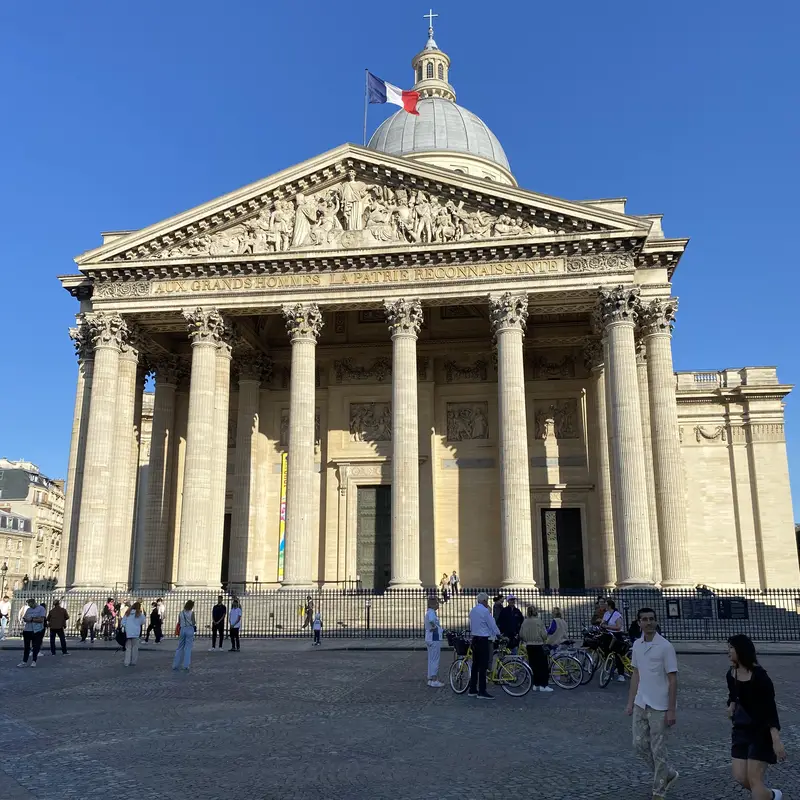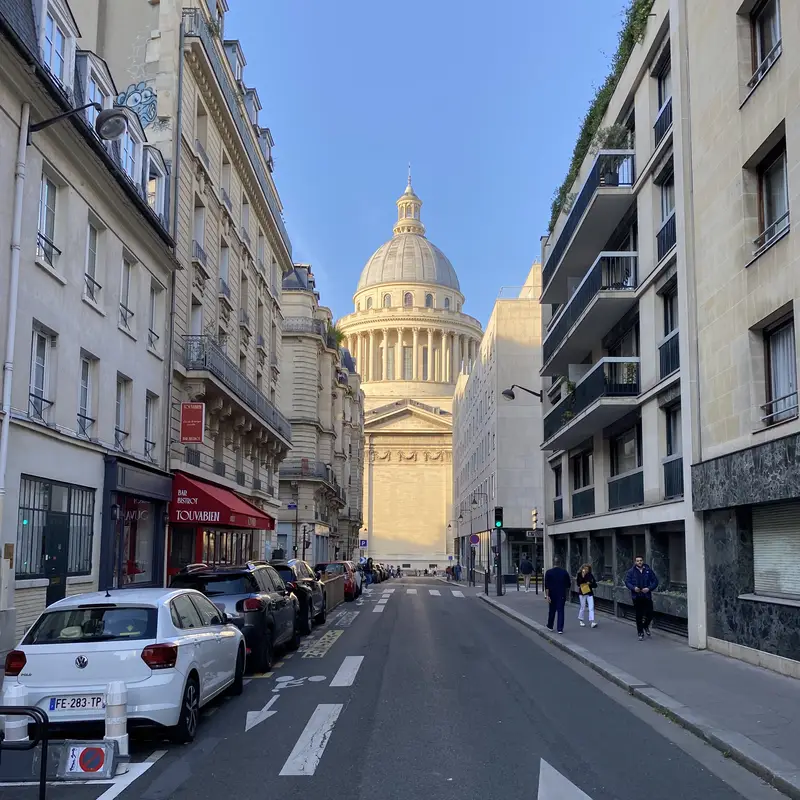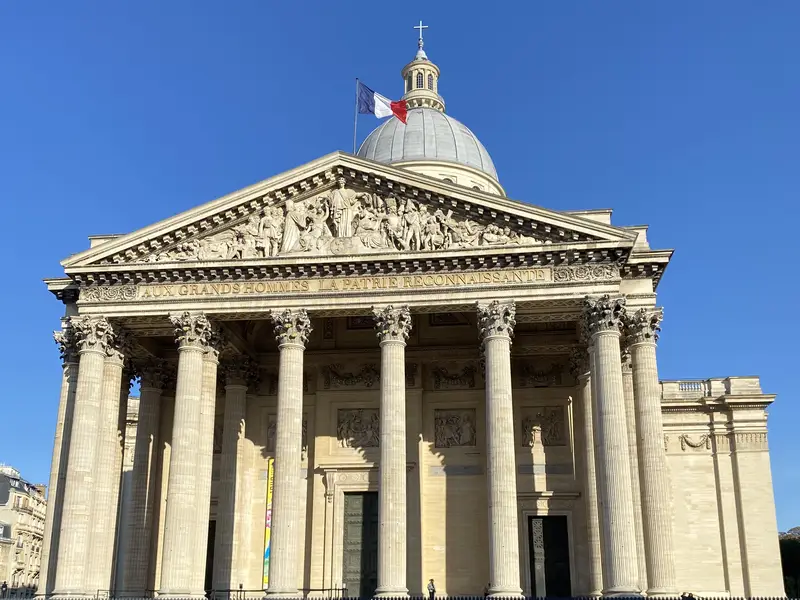A Stroll Through History at the Parisian Pantheon
The Pantheon in Paris is a tribute to the figures who shaped French history. This architectural masterpiece invites you to delve into the heart of French culture.
The Pantheon in Paris: An Homage to French Greats
Walking through the Latin Quarter of Paris, the majestic Pantheon is impossible to miss. This impressive structure, perched atop Sainte-Geneviève Hill, is not only an architectural gem but also a symbol of French pride and a tribute to those who left their mark on the nation. Join us on a journey to the heart of this monument that tells the story of a nation.
The History of the Pantheon: From Church to Mausoleum
The Pantheon was built in the late 18th century as a church dedicated to Sainte Geneviève, the patron saint of Paris. Construction began in 1758 by order of King Louis XV, who vowed to erect a grand church if he recovered from a serious illness. Architect Jacques-Germain Soufflot drew inspiration from the Roman Pantheon to create a masterpiece that blends classicism with new building techniques.
With the advent of the French Revolution, the Pantheon lost its original religious function. In 1791, it was transformed into a mausoleum, becoming the final resting place for illustrious figures of France. This transformation was symbolic—the Pantheon was to celebrate “great men of the fatherland,” as inscribed on its façade.
Extraordinary Architecture That Captivates
The Pantheon’s centerpiece is its massive dome, reaching a height of 83 meters. The classical façade with its columns reminiscent of an ancient temple captivates from the outside, while the interior boasts stunning frescoes depicting scenes from French history. One of the most remarkable features is the Foucault pendulum, installed in 1851, which demonstrates the Earth’s rotation and adds a touch of scientific wonder to the space.
Beneath the structure lies a crypt where the remains of luminaries such as Voltaire, Rousseau, Victor Hugo, Marie Curie, Émile Zola, and Alexandre Dumas are interred. Walking through this crypt feels like a journey through the history of literature, science, and politics.
A Symbol of the French Spirit
The Pantheon is not only a memorial but also a gathering place for the French people to honor their heroes. It is a space where the past meets the present, and ceremonies are regularly held to commemorate new “pantheonizations.” This honor is reserved for those who have made exceptional contributions to the nation, as evidenced by the recent induction of Simone Veil, one of the most significant advocates for human rights.
Practical Tips for Visiting
The Pantheon is open year-round, and admission is free for young European Union citizens under 26. From the upper gallery of the dome, you can enjoy a breathtaking view of Paris, worth every step climbed. Visiting early in the morning or late in the afternoon is recommended to avoid crowds and experience the tranquil atmosphere. The Pantheon’s official website provides additional details.
Conclusion: A Symbol of France’s Immortality
The Pantheon is more than a tourist attraction—it is a place that reminds visitors of how deeply French culture is intertwined with the ideals of liberty, equality, and the celebration of human spirit. Whether you are a lover of history, architecture, or literature, visiting this unique site offers a glimpse into the soul of France.










